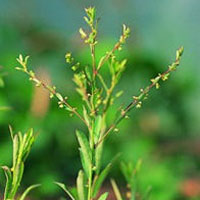health guides
Phyllanthus
 © Martin Wall
© Martin WallHow It Works
Phyllanthus primarily contains lignans (e.g., phyllanthine and hypophyllanthine), alkaloids, and flavonoids (e.g., quercetin).
Phyllanthus blocks DNA polymerase, the enzyme needed for the hepatitis B virus to reproduce. In one study, 59% of those infected with chronic viral hepatitis B lost one of the major blood markers of HBV infection (e.g., hepatitis B surface anti-gen) after using 900 mg of phyllanthus per day for 30 days.3 While clinical trials on the effectiveness of phyllanthus for HBV have been mixed, the species P. urinaria and P. niruri seem to work better than P. amarus.4 Clinical trials with hepatitis B patients have used 900–2,700 mg of phyllanthus per day.
How to Use It
Research has used the powdered form of phyllanthus ranging from 900–2,700 mg per day for three months.5
Copyright © 2024 TraceGains, Inc. All rights reserved.
Learn more about TraceGains, the company.
The information presented by TraceGains is for informational purposes only. It is based on scientific studies (human, animal, or in vitro), clinical experience, or traditional usage as cited in each article. The results reported may not necessarily occur in all individuals. Self-treatment is not recommended for life-threatening conditions that require medical treatment under a doctor's care. For many of the conditions discussed, treatment with prescription or over the counter medication is also available. Consult your doctor, practitioner, and/or pharmacist for any health problem and before using any supplements or before making any changes in prescribed medications. Information expires December 2024.


 We are proud to announce that
We are proud to announce that  As the market evolves, customers increasingly request a wider variety of omega-3 options for their lipid...
As the market evolves, customers increasingly request a wider variety of omega-3 options for their lipid...  Maintaining healthy glucose levels is crucial for preventing metabolic conditions like diabetes,...
Maintaining healthy glucose levels is crucial for preventing metabolic conditions like diabetes,...  Looking at formulating a new vitamin blend? Discover
Looking at formulating a new vitamin blend? Discover 







































